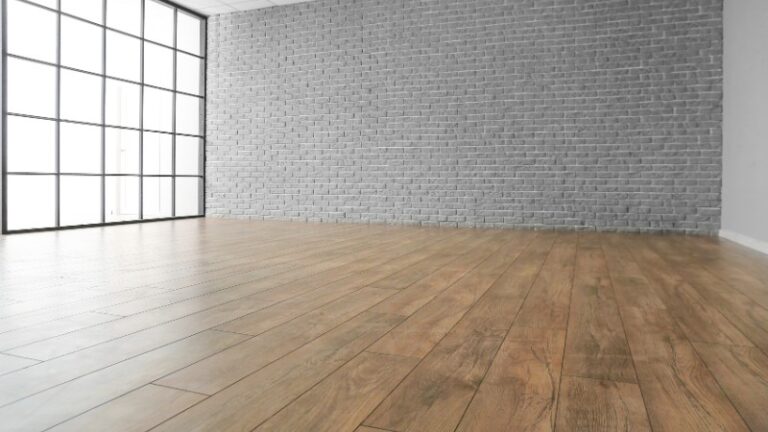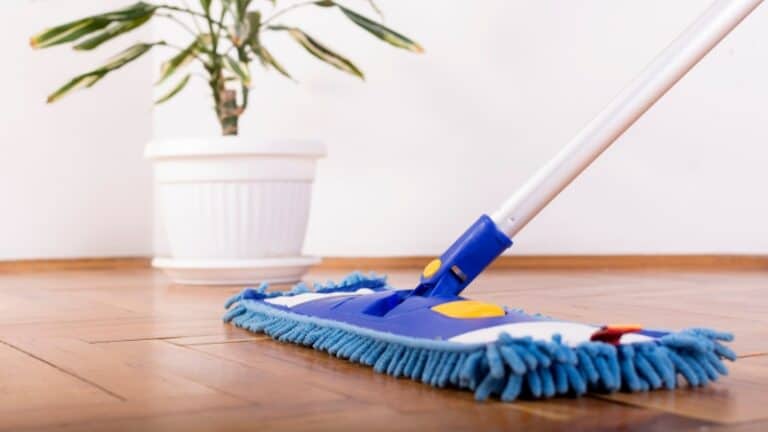White mold may not hog the spotlight like its infamous cousin, black mold—but don’t let its pale disguise fool you. It’s the quiet troublemaker that can stir up big problems behind the scenes.
This fuzzy, white fungus tends to sneak into damp corners of your home, especially in places like bathrooms, basements, or crawl spaces where moisture loves to linger. At first glance, it might look like dust or mildew, but it’s a whole different breed of trouble.
While black mold grabs most of the spotlight (and rightfully so), white mold isn’t far behind when it comes to health risks, including various white mold symptoms . It can trigger respiratory problems, damage building materials, and quietly spread across wood, walls, and other porous surfaces. Mold exposure affects nearly half of U.S. homes—and it often starts where you least expect it.
Spotted a thin layer of white fluff? Don’t ignore it. What looks harmless now could turn into a bigger mold problem fast.
Let’s talk solutions.
Content
- 1 What Causes White Mold to Grow?
- 2 Common Places in the House Where White Mold Grows
- 3 7 Proven Methods to Get Rid of White Mold
- 3.1 1. Call Professionals for Mold Removal
- 3.2 2. Use White Vinegar to Kill Mold
- 3.3 3. Use Hydrogen Peroxide for Mold Stains
- 3.4 4. Clean with Baking Soda Paste
- 3.5 5. Use Tea Tree Oil Solution for Mold Removal
- 3.6 6. Scrub with Bleach (for Severe Mold Growth)
- 3.7 7. Prevent Future Mold Growth with Proper Ventilation
- 4 Need Help with White Mold Removal? Let Modern Maids Handle It
- 5 FAQs
What Causes White Mold to Grow?
White mold may sound simple, but it’s anything but.
This fungus can appear in shades of white, grey, or even green depending on what it’s feeding on. It often shows up as a powdery layer and includes a mix of species like Penicillium and Aspergillus, both of which can settle into your home and thrive silently if the conditions are just right.
The biggest culprit?
Excess moisture. Whether it’s a steamy bathroom, a poorly ventilated kitchen, or condensation near pipes, white mold thrives where water sticks around.
High humidity can cause moisture to linger on wood floors, drywall, or ceilings, especially in basements or crawl spaces. It doesn’t need a flood to get going; just a persistent leak under your sink or around your shower can be enough to kickstart white mold growth in wet materials.
Lack of airflow only makes it worse. When air isn’t circulating properly—like in a stuffy attic or a bathroom without an exhaust fan—humidity levels stay high, creating the perfect breeding ground for mold spores.
Add in warm temperatures, and now you’ve got a mold-friendly environment that’s practically inviting fungus to settle in.
White mold also has a taste for the natural. Materials like wood, paper, and fabric trap moisture easily and serve as food sources for mold.
That old stack of newspapers in the garage? Or the cardboard boxes stored in a damp basement? They’re mold magnets. Combine that with poor ventilation and it’s a recipe for a mold infestation.
Even minor issues like roof leaks or a dripping clothes dryer hose can lead to major mold problems if left unaddressed. It doesn’t take long—once white mold finds the right spot, it spreads quickly across surfaces, making removal more difficult the longer it’s ignored.
Understanding these triggers is the first step toward controlling white mold before it takes control of your space.
Common Places in the House Where White Mold Grows
White mold doesn’t need much to get comfortable—it just needs a little moisture and a place to settle. And once it finds a cozy corner, it spreads faster than you might think.
While technically it can grow anywhere, certain spots around the house tend to be its favorite hideouts. Knowing where to look is half the battle.
Start with your bathroom—the unofficial spa for mold. Every hot shower sends steam swirling up to the ceiling, into the grout, and around the sink.
If you’ve ever noticed fuzzy patches on your shower tiles or a weird spot creeping across the ceiling, that’s white mold saying hello. Poor air circulation and warm, wet surfaces make this one of its top destinations.
Basements and crawl spaces are next in line. They’re often cool, dark, and prone to moisture from ground seepage or high humidity, especially during rainy months.
A Dallas homeowner recently found white mold fungus creeping up the wall behind stacked boxes after a stormy week. It had gone unnoticed for months, masked by stored clutter and stale air.
Then there’s the kitchen—a moisture playground where steps to reduce humidity are crucial to prevent mold growth.
Under the sink, around the dishwasher, and behind the fridge are all prime locations for mold growth. If there’s a slow leak in your cabinet plumbing, it might be feeding a growing patch of white fluffy mold behind your cleaning supplies.
And unlike spills on the floor, these leaks are easy to overlook until there’s a musty smell you can’t ignore.
Up above, attics and roof spaces often hide mold due to poor insulation or roof leaks. Wood beams and insulation soaked by a small drip can quickly become a breeding ground.
One homeowner in Austin didn’t realize that a minor roof leak had triggered mold growth on the rafters until a home inspection uncovered the issue months later.
Even everyday furniture placement can cause problems.
A sofa pushed tightly against a poorly insulated wall during winter might trap enough condensation to support white mold growth. The same goes for large appliances like washing machines—check behind them occasionally for dampness.
And let’s not forget the sneaky spots—behind wallpaper or paneling.
These layers can trap moisture between the wall and the surface. If you see bubbling or peeling wallpaper, that might be more than just bad glue—it could be a sign of mold making itself at home.
These are the areas mold loves most—but with regular checks and good ventilation, you can stop white mold in its tracks before it takes hold, especially if you reduce moisture.
7 Proven Methods to Get Rid of White Mold
1. Call Professionals for Mold Removal

White mold may start off looking like an innocent patch of dust, but underestimate it and you’ll find it quietly invading your walls, wood surfaces, and even your air.
If you’ve already scrubbed it once, only to see it return, it’s a sign that it’s rooted deeper than you think. That’s when calling in professional help isn’t just smart—it’s necessary.
Professional cleaning services like Modern Maids know exactly how to deal with mold growth, even in tricky spots like crawl spaces, behind wallpaper, or around leaky HVAC systems.
We use industrial-grade equipment and non-toxic mold-killing cleaners to make sure every white mold spore is gone—not just the ones you can see. That means no more guessing if it’ll come back.
What sets us apart is more than just equipment—it’s strategy.
Modern Maids doesn’t just remove visible mold; they get to the core of the problem. Whether it’s a roof leak, poor ventilation, or high humidity levels causing the outbreak, we’ll assess and address those underlying issues so mold doesn’t get a second chance.
And while some mold problems truly need a professional touch, we get it—some folks are DIY warriors. Your home is probably packed with tools and cleaning supplies that can take on a small patch or two. But for the stubborn stuff that keeps creeping back, you’ll want a team that can guarantee it’s gone for good.
If white mold has made itself a repeat guest, it’s time to evict it once and for all. Modern Maids offers expert mold removal and deep cleaning services that take care of the mold and the mess it leaves behind. Give us a call and reclaim your fresh, clean home.
2. Use White Vinegar to Kill Mold
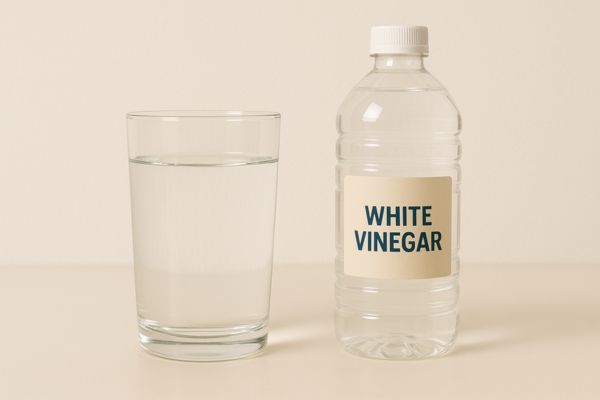
If white mold had an arch-nemesis in your pantry, it would definitely be white vinegar.
Don’t let the fact that you drizzle it over salads fool you—this kitchen staple doubles as a powerful, eco-friendly mold killer. It’s safe, non-toxic, and tough enough to handle mold on both porous and non-porous surfaces without filling your home with harsh chemical fumes.
Here’s how it works: pour undiluted white vinegar into a spray bottle and douse the affected area. Don’t rush—let it sit for at least an hour to give the acetic acid time to do its thing.
Afterward, grab a sturdy scrub brush and get to work. Wipe the surface clean with a damp cloth, and if the mold isn’t completely gone, just repeat the process.
Vinegar doesn’t just stop at white mold removal—it helps prevent future mold growth too. Regular use in mold-prone areas like bathroom tile, window sills, or under-sink cabinets can make a big difference in keeping your home mold-free.
Pro tip?
Vinegar is especially effective for smaller patches of mold that haven’t spread too deep. It’s the go-to choice when you want something simple, safe, and already sitting in your kitchen.
Mold may thrive in damp environments—but with a little vinegar, it won’t thrive for long.
3. Use Hydrogen Peroxide for Mold Stains
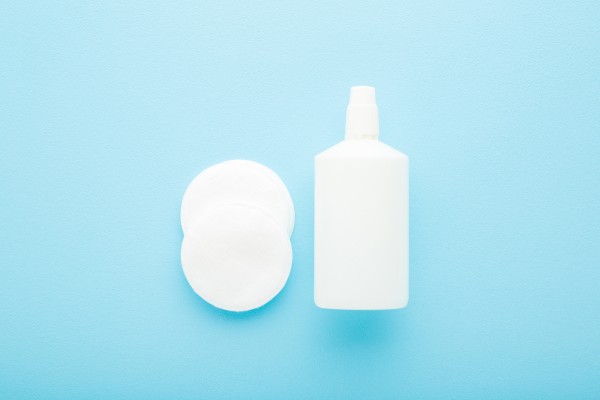
Mold doesn’t just grow—it leaves behind some seriously stubborn stains.
When white vinegar doesn’t do the trick, hydrogen peroxide steps in as a stronger, fizzing solution that not only disinfects but also fades those unsightly marks on tile, grout, and painted walls.
Safety comes first. Mold spores don’t play nice, so throw on a pair of gloves, a mask, and goggles before you get started.
Spray 3% hydrogen peroxide directly onto the affected area and let it sit for 10 to 15 minutes. That time allows it to break down the mold structure and lift embedded spores from the surface.
Next, grab a scrub brush and work the surface until the stain begins to fade. Rinse everything down with clean water, and—this is key—dry the area completely to prevent mold from making a comeback.
While peroxide works wonders on hard surfaces, it’s not a match for porous ones like ceiling tiles, fabrics, or wood. And because it can lighten certain materials, always spot-test a small, hidden section first.
From bathroom corners to kitchen walls, hydrogen peroxide is a solid pick when you need to erase the evidence of mold—fast and safely.
4. Clean with Baking Soda Paste
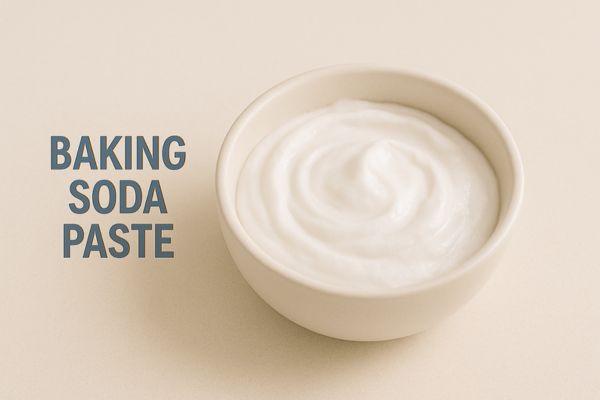
Not all mold-fighting heroes come in harsh chemical bottles—some are hiding right in your kitchen.
Baking soda, that humble white powder you toss into cookie dough and fridge corners, is also a quiet powerhouse against white mold. Its alkaline properties disrupt mold growth, while its gentle abrasiveness helps scrub mold off surfaces without damaging them.
To start, mix baking soda with just enough water to form a thick, spreadable paste.
Apply it directly onto moldy areas—think tile grout, the corners of wood furniture, or even windowsills—and scrub with a brush in slow, circular motions. This method is especially helpful for cleaning textured or uneven surfaces where mold tends to cling.
When mold stains prove stubborn, upgrade your paste by adding a splash of hydrogen peroxide. This duo creates a fizzing, stain-lifting combo that can tackle tough spots while remaining safe for most non-porous materials.
Baking soda doesn’t just remove mold—it goes one step further by absorbing moisture and neutralizing odors, making it harder for mold to return.
That’s why it’s a favorite for damp environments like under the sink or around laundry areas.
Pair it with vinegar for a one-two punch that cleans, deodorizes, and gives white mold fewer reasons to stick around. Clean, scrub, and breathe easier—your pantry just might be your mold’s worst nightmare.
5. Use Tea Tree Oil Solution for Mold Removal

Sometimes the strongest solutions come from the most unexpected places—like your essential oil shelf.
Tea tree oil, best known for its skincare and aromatic benefits, happens to be a natural mold assassin. With antifungal and antibacterial properties, it’s surprisingly effective at wiping out white mold and keeping it from making a comeback.
To create your own mold-fighting spray, mix one teaspoon of tea tree oil with one cup of water in a spray bottle.
Shake it well, then apply directly to the moldy surface. Let it sit for 10 to 15 minutes, giving it time to break down the mold at the root. Afterward, scrub the area gently and wipe clean.
Tea tree oil works best on non-porous materials like tile, glass, and sealed wood. On porous surfaces—think fabrics or drywall—it should be used sparingly to avoid soaking the material, but it can still be effective in controlling mold growth.
Interestingly, a 2015 study published by the National Library of Medicine found that tea tree oil was even more effective than vinegar in killing certain mold strains.
And while its scent may be bold at first, it fades quickly and leaves a naturally fresh aroma behind.
This method combines cleaning with prevention, all while keeping things natural. When you want a mold remedy that’s as gentle on your home as it is tough on spores, tea tree oil brings the best of both worlds.
6. Scrub with Bleach (for Severe Mold Growth)

When white mold spreads aggressively and starts taking over entire surfaces, it’s time to bring in the big guns—bleach.
While it’s not the gentlest option in your cleaning toolkit, it’s definitely one of the most powerful for killing mold on hard, non-porous surfaces. Think tile, tubs, and concrete—places where mold likes to settle deep and stay put.
But before you start pouring, remember: bleach is strong stuff.
Always wear rubber gloves, a mask, and make sure the area has proper ventilation. Mold spores and bleach fumes together aren’t exactly great for your lungs. Crack a window, turn on a fan, and give yourself room to breathe while cleaning.
To make the solution, mix one part bleach with ten parts water. Apply it generously to the affected area and let it sit for around 10 minutes.
This soaking time helps disinfect the surface and break down the mold layer. Scrub thoroughly with a stiff brush, rinse with clean water, and don’t forget to dry the area completely—any leftover moisture can invite mold right back.
Before using bleach on any surface, test a small, hidden spot first.
It has a habit of lightening or damaging certain materials, especially fabrics and colored surfaces. And while bleach is excellent for killing surface mold, it doesn’t penetrate porous materials well—meaning if moisture is still present, mold can return sooner than you’d expect.
This method isn’t for everyday touch-ups—it’s for those heavy-duty cleanups where mold just won’t back down. Use it wisely, and only when the situation really calls for it.
7. Prevent Future Mold Growth with Proper Ventilation
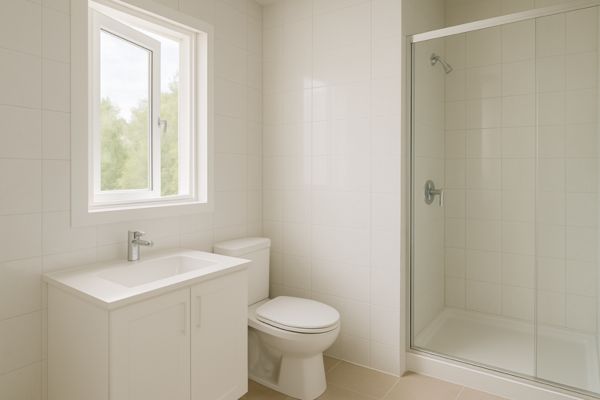
There’s one truth about mold: it doesn’t just appear out of nowhere.
When you spot that thin layer of white fuzz, it’s often your home waving a red flag that something’s off—usually a hidden moisture issue. Scrubbing mold away is only half the battle; keeping it from coming back is where real victory lies.
Start by getting to the root of the problem.
A mold infestation often signals excess moisture caused by something bigger—like a leaky pipe, poor insulation, or sneaky roof damage.
Fixing the cause, not just the consequence, is essential. Whether it’s hiring a plumber to stop a slow drip or sealing gaps that let rainwater creep in, every small repair helps cut off mold’s water supply.
Once that’s under control, make sure air is moving freely throughout your home. Mold thrives in humid, stale environments—bathrooms with no fans, kitchens sealed up tight, or laundry rooms with drying clothes and no fresh air.
Install exhaust fans where needed, crack open a window after steamy showers, and consider using a dehumidifier in moisture-prone zones.
Good ventilation also means keeping tabs on the quiet troublemakers: your HVAC system, your attic insulation, and even your clothes dryer vent. These areas often go unchecked, making them perfect breeding grounds for mold spores.
Clean, dry, and well-ventilated spaces leave white mold with nowhere to settle.
Prevention isn’t just about products—it’s about habits. A few proactive steps today can save you a major cleanup tomorrow.
Need Help with White Mold Removal? Let Modern Maids Handle It
Still wondering how to get rid of white mold without turning your entire weekend into a scrub-a-thon? While vinegar and elbow grease might work for a small patch, mold rarely plays fair. Once it starts creeping into your walls, crawl spaces, or bathroom ceilings, it’s time to call in the pros for effective mold remediation.
At Modern Maids, we don’t just clean—we kick mold to the curb.
Our team is trained to tackle mold safely, thoroughly, and without the guesswork. From pinpointing the moisture source to scrubbing every last spore, we’ve got your home’s health (and your peace of mind) covered.
Ready to breathe easier? Call us at (469)-430-8860
Or skip the call and book your cleaning online: modern-maids.com/booking-page
Don’t wait for mold to make itself comfortable—let us show it the door.
FAQs
Is white mold harmful?
White mold might not look as menacing as toxic black mold, but it can still pose serious health risks if mold spreads unchecked. Prolonged mold exposure can lead to respiratory problems, allergic reactions, and even asthma attacks, especially in people with existing conditions. White mold spores spread quickly across organic materials like wood and drywall, leading to structural damage over time. Whether it’s on your walls, in crawl spaces, or growing behind furniture, including wood mold, all the mold needs to be addressed—because white mold is dangerous when ignored.
Does white vinegar kill white mold?
Yes, white vinegar is a reliable and non-toxic mold remover that kills many types of mold spores, including white mold fungus, and is often discussed when learning how to get rid of white mold . Vinegar penetrates porous materials better than bleach, making it a great solution for mold on wood surfaces, grout, and tile. Spray undiluted vinegar directly onto the affected area, let it sit for about an hour, and scrub with a brush for effective mold cleanup. It’s also excellent for controlling moisture and preventing future mold growth when used regularly.
Can you kill white mold with bleach?
Bleach is a powerful mold-killing cleaner that works well for severe mold growth on hard, non-porous surfaces like tile and tubs. While bleach can kill visible mold and disinfect the affected area, it’s not effective on porous materials like wood or drywall, where white mold spores can burrow deep. Use caution, wear rubber gloves, and ensure proper ventilation when using bleach. Also remember—bleach doesn’t prevent future mold growth if the underlying moisture problem isn’t resolved.
Is it safe to sleep in a room with white mold?
Sleeping in a room with visible mold can be risky, especially if you have allergies, asthma, or respiratory problems. White mold spores can become airborne and cause irritation or worsen existing health conditions. Mold thrives in damp environments with poor ventilation, so a bedroom with excess moisture or poor air circulation is a breeding ground for mold infestation. To stay safe, address the mold problem immediately and consider using a dehumidifier to control moisture levels and prevent mold growth caused by any moisture problem .
Can I leave white vinegar on mold overnight?
Leaving white vinegar on mold overnight can actually improve its effectiveness, especially on stubborn patches of white fluffy mold. Since vinegar is a mild acid, it kills mold spores and helps break down mold covers on porous surfaces like grout or untreated wood. Letting it sit longer allows the solution to penetrate deeper into the material, making it easier to remove mold the next day. Just remember to ensure proper ventilation and dry the affected area completely after cleanup to prevent future mold growth.





